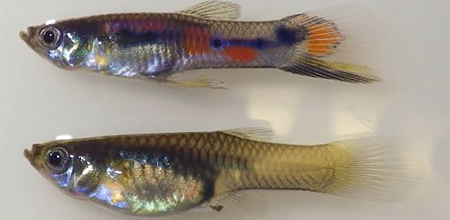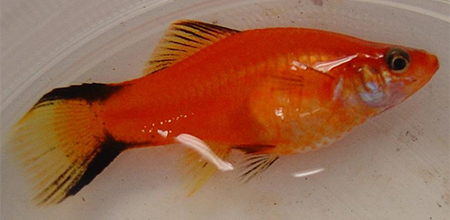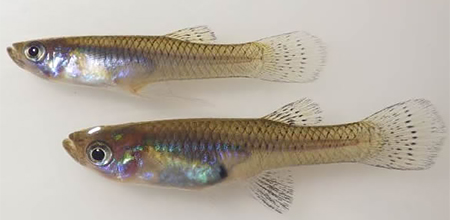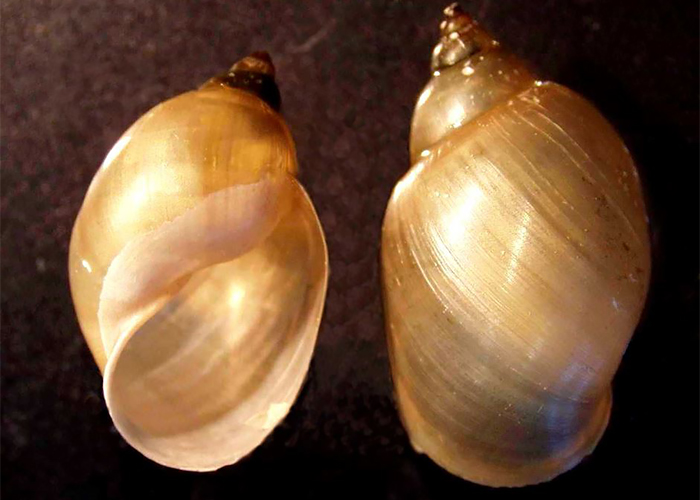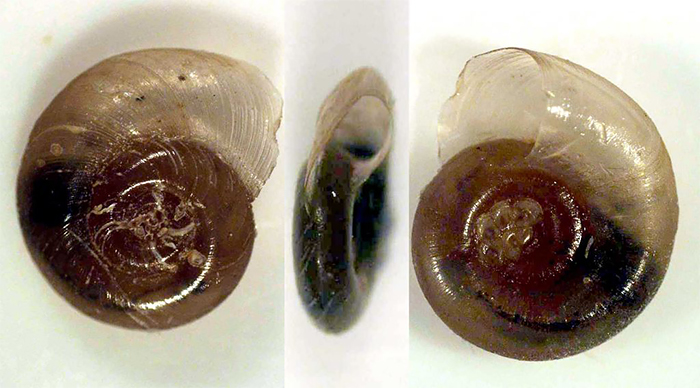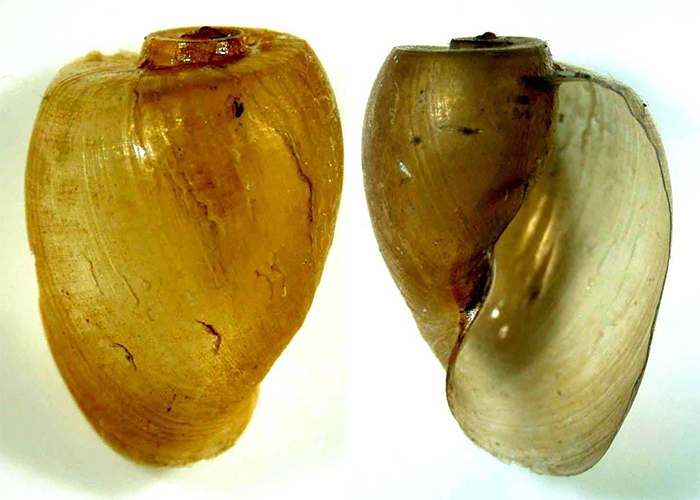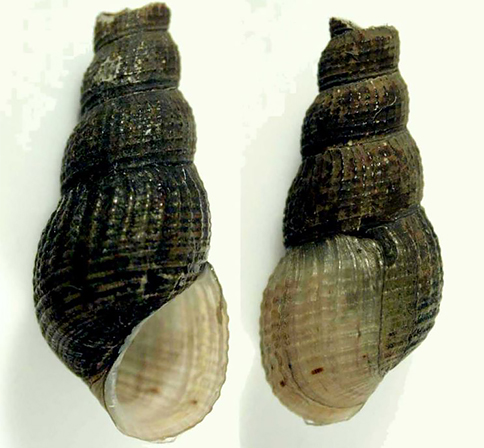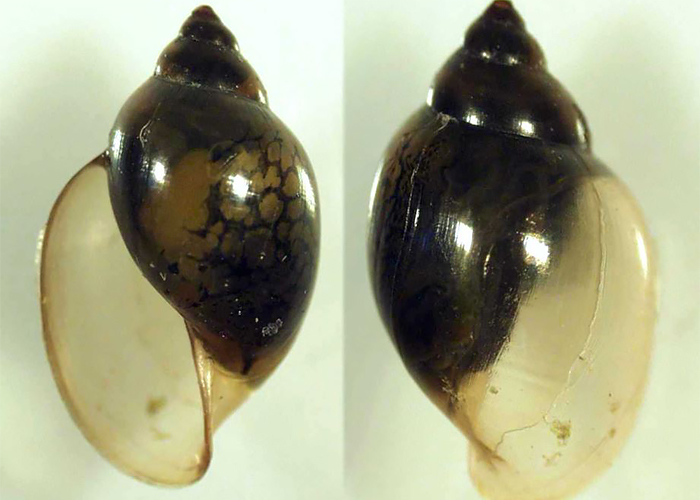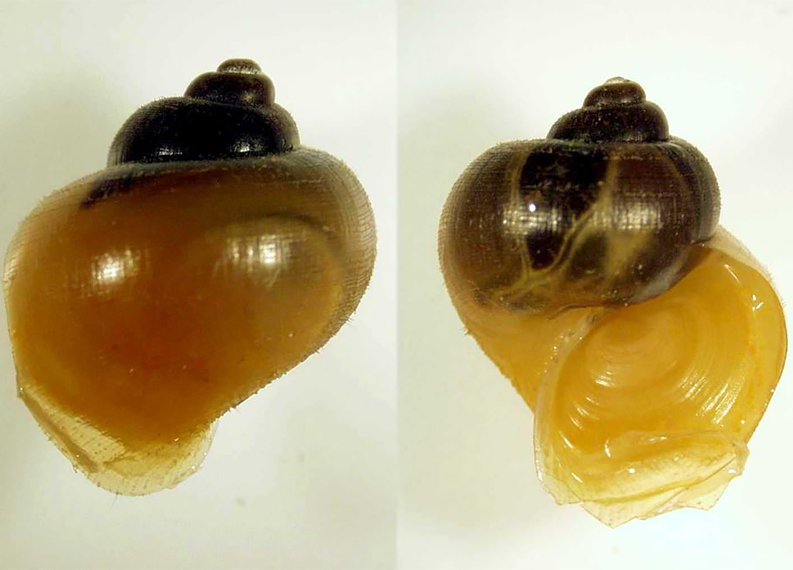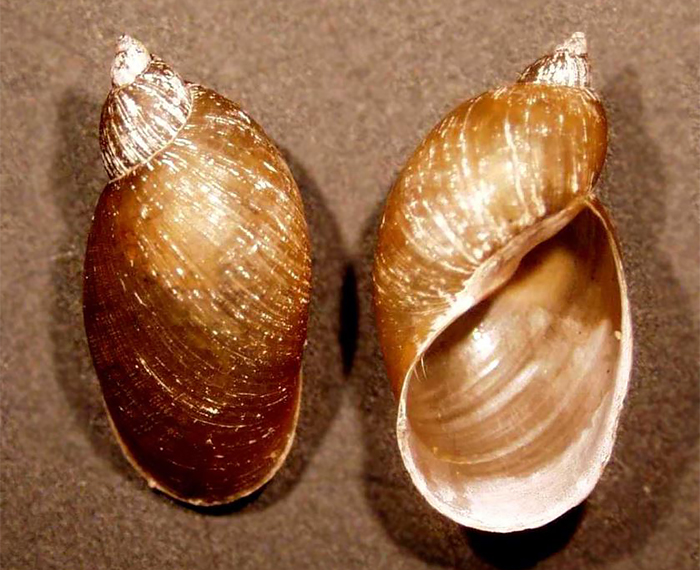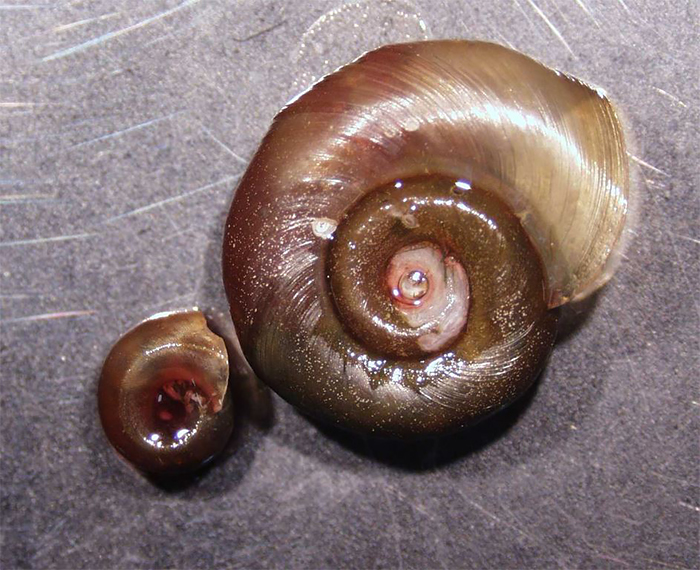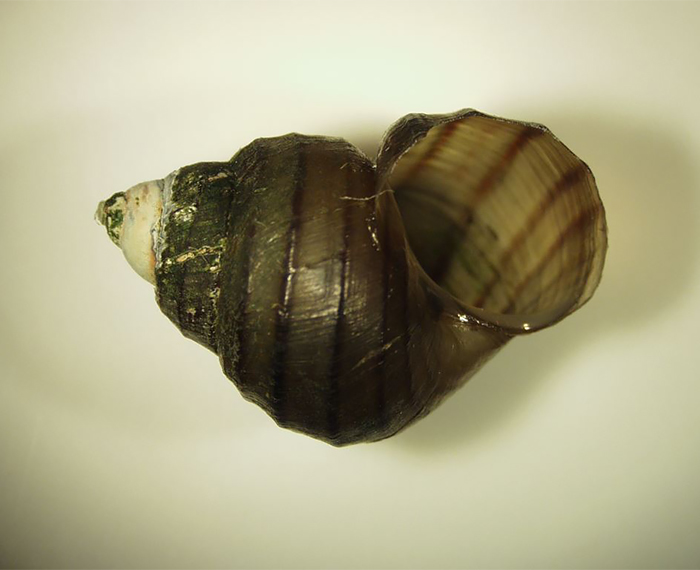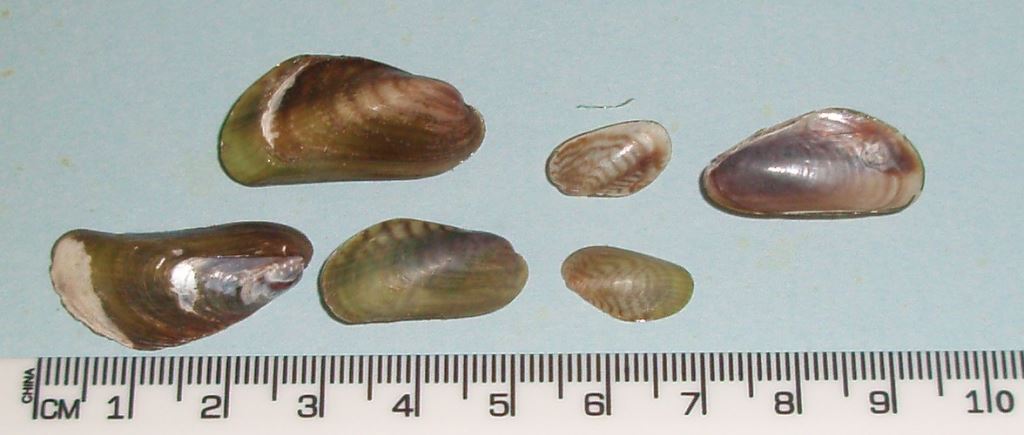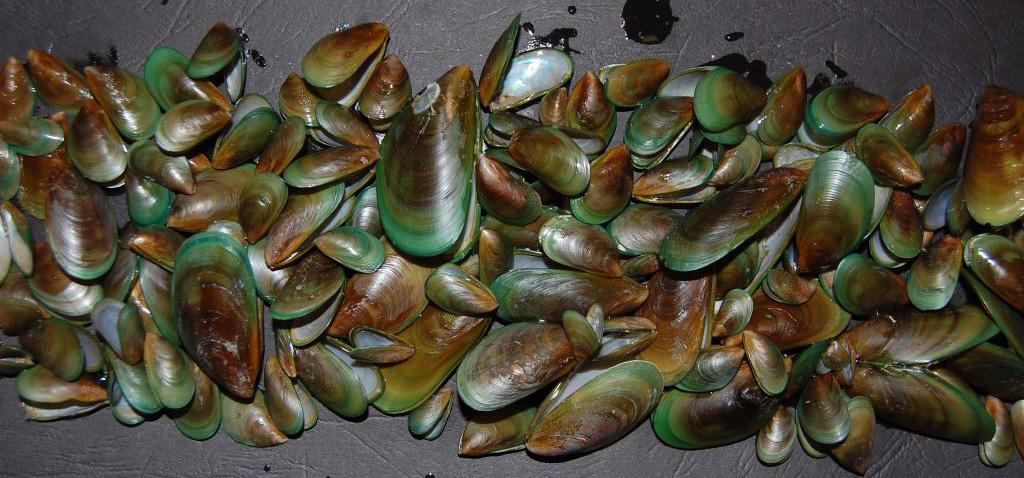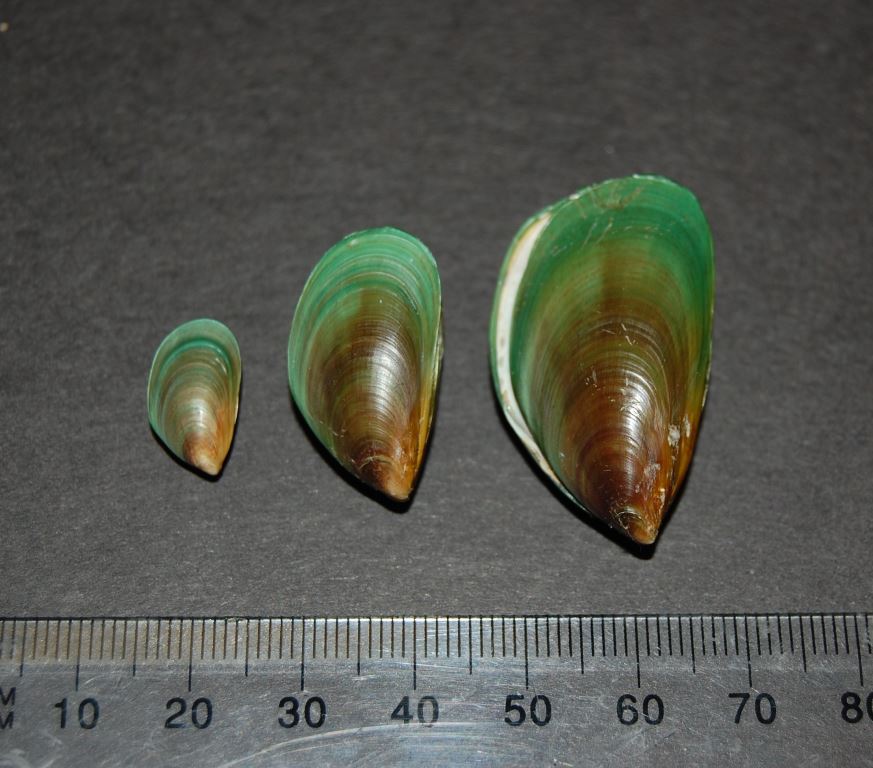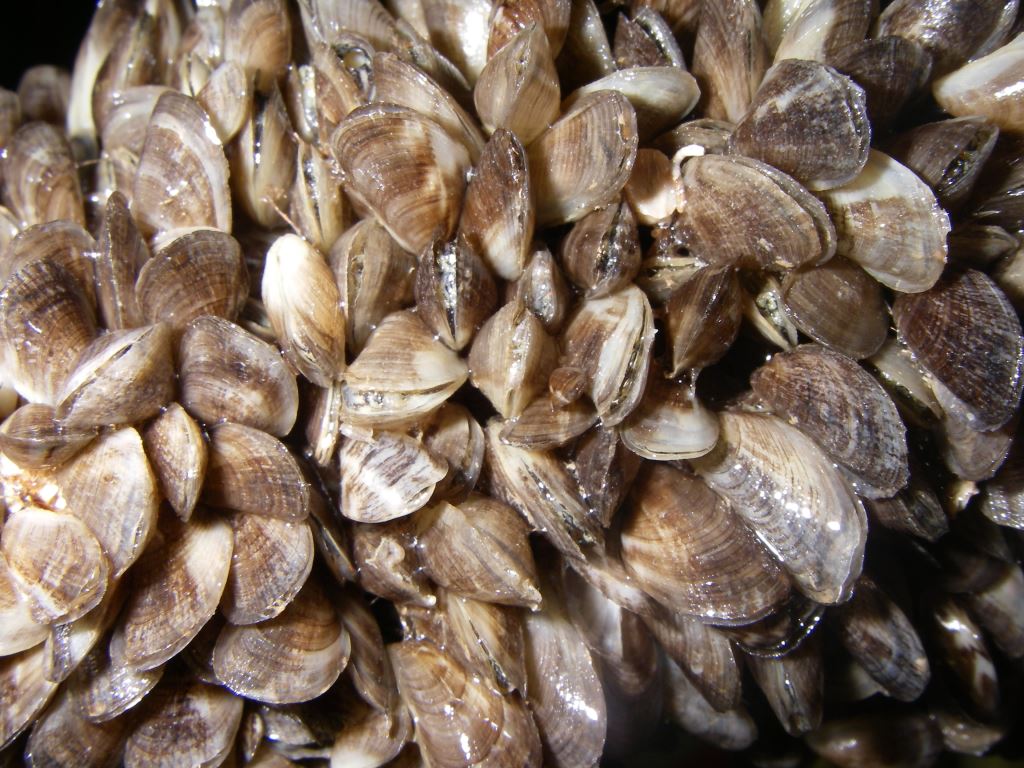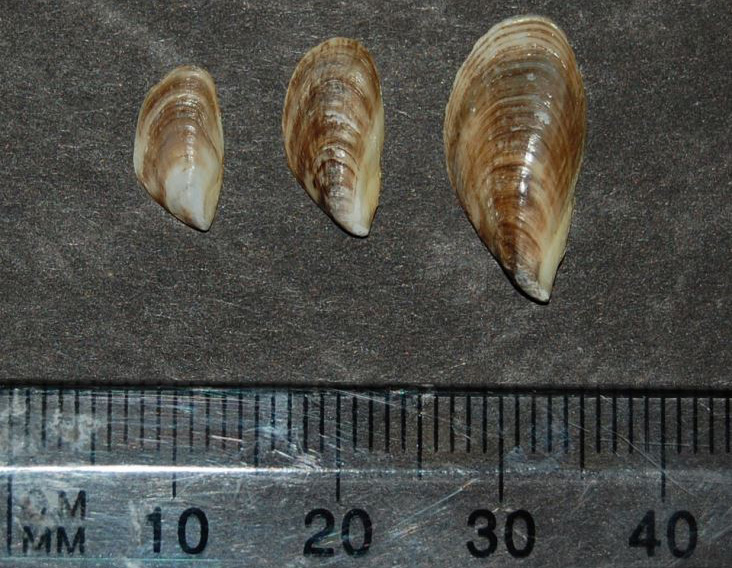Introduction
Aquatic pests are harmful plants and animals that can be introduced to our waters from other countries or parts of Australia.
Aquatic pests include a wide range of salt and freshwater organisms from microscopic algae to species of seaweed, fish, barnacles, sea squirts, mussels and crabs.
Aquatic pests can significantly harm the Northern Territory's aquatic environment.
They may threaten the biodiversity and native species, and affect commercial and recreational industries such as fishing, tourism, aquaculture and port operations.
Types of aquatic pests
This section provides information about all of the following, which are classes of pests under NT law:
- aquatic pests
- noxious fish
- freshwater pests
- marine (sea) pests.
Legislation
Diseased and contaminated fish, and noxious species is listed under the Fisheries Regulations 1992.
Rules about aquatic pests
Marine pests can arrive on boats of all types and sizes.
All boats coming in from overseas must be assessed for marine pests before they can enter any Darwin marina.
Read about hull pest inspections for visiting boats.
Imported aquarium species can become pests if released, accidentally or deliberately, into natural waterways.
It is illegal to move any aquatic life from a water catchment or storage unit to another without authority.
Find out how to report aquatic pests and what to look out for.
Preventing aquatic pests
The NT Government's Aquatic Biosecurity Unit works with industry and community groups to monitor and manage the risk of new pests arriving in the NT.
This includes hull pest inspections for visiting boats, marine and freshwater pest control programs and a public awareness campaign of the affects of releasing non-native fish into NT waterways.
How you can prevent aquatic pests
To prevent both marine and freshwater pests becoming established, you should do all of the following:
- regularly clean and check seawater systems on your boat.
- anti-foul the hull of your boat every year
- when cleaning your vessel or any gear, make sure no debris, including any organism, enters the water
- when out fishing, diving or boating, report aquatic pests including unusual aquatic growth or aquatic life in unnaturally high numbers
- dispose of unwanted pond or aquarium fish humanely or check whether a local pet shop will take them - do not dump them in any waterway
- prevent your outdoor ponds from overflowing during wet season rains
- use attractive and colourful native fish and plants in your home aquarium and ponds.
Freshwater pests
It is illegal to release aquarium fish and aquatic plants into freshwater waterways in the Northern Territory (NT).
Releasing non-native fish and plants, or the water they have been living in, threatens the NT's freshwater ecosystems.
Non-native freshwater plants
Plants such as water hyacinth and salvinia can multiply and spread rapidly, choking waterways, blocking drainage systems and making it difficult for boats to move.
Non-native freshwater fish
A non-native fish is one that is not found naturally in the NT.
Many ornamental fish are non-native species.
They can become pests if they are released into freshwater lakes, billabongs, creeks and rivers.
If released into our waterways, non-native fish can do all of the following:
- compete with native species for food and space
- dominate waterways by reproducing in large numbers, cross-breeding with native species and surviving in difficult and disturbed habitats
- alter and disturb natural habitats
- feed on native fish, insects and plants
- introduce diseases and parasites.
Non-native fish found in NT waterways include Siamese fighting fish, guppies, platies and swordtails.
Above: left - swordtail pair, male at top; centre - guppy pair, male at top; right - platy female
The noxious fish gambusia (pictured below) was found in Alice Springs in 2000 and Darwin in 2014 but both populations were successfully eradicated.
Identify non-native fish
To find out more, get the freshwater pest identification guide PDF (7.5 MB).
The guide helps you:
- identify non-native fish
- learn about the problems non-native fish can cause
- know what to do if you think you have spotted a pest.
You can also get the free NT Fishing Mate app.
Freshwater pest snails
Pest snails pose serious health risks for both animals and humans.
They can carry diseases and parasites like the common liver fluke which causes liver disease in mammals like sheep, cattle and horses.
In the NT, native and introduced snails can be found in ornamental ponds and aquariums.
Snails can arrive hidden in ornamental plants for ponds and aquariums and are easily spread when plants are shared or when an aquarium is cleaned or the water changed.
Small snails are hard to see on plant leaves and are easily missed.
Snails lay their eggs on plant stems and leaves and if infected plants are moved the eggs on them hatch and infect previously snail-free aquariums and ponds.
If you find a snail which you think might be an introduced species, or you are unsure, report it straight away to the Aquatic Biosecurity Unit.
Native snails
These snails are native to the NT and are not pests.
Austropeplea lessoni
Gyraulis
Amerianna carinata
Melanoides
Glyptophysa
Introduced snails
These snails are introduced and are pests.
American ribbed fluke snail - pomacea bridgesii
Pseudosuccinea columella
Ramshorn - Planobarius comeus
Bellamya heudi guangdungensis
What to do if you find introduced snails
You must contact the Aquatic Biosecurity Unit if you:
- think you have seen one of the introduced snails pictured above
- see a snail species that you do not recognise or have never seen before.
How to stop aquatic pests entering freshwater
You should follow all of these rules to stop pests from entering freshwater habitats:
- don't dump unwanted, sick or diseased fish or plants in any waterway or drain
- give unwanted aquarium plants and animals - even native ones - to a pet shop or dispose of them humanely - eg by freezing
- prevent your outdoor ponds from overflowing during wet season rains - put screens across all outlets to prevent accidental escapes
- use attractive and colourful native fish and plants in your home aquarium and ponds - they are less likely to cause a major impact if accidentally released
- keep an eye out for new species in your area and report aquatic pests
- check aquatic plants you get for your aquarium or pond for non-native snails
- safely dispose of your aquarium contents - read more below.
How to dispose of aquarium contents
You should do all of the following if you want to dispose of fish, water or plants from your aquarium:
- put your unwanted plants, fish and animals - which have been humanely euthanised - into a sealed plastic bag and put in the rubbish bin
- collect your aquarium water in a bucket, dose it with household bleach or pool chlorine and leave it overnight before disposing of it.
You must not do any of the following:
- dispose of aquarium water, plants and animals in a way that allows them to enter the environment
- drain aquarium water in an area that will reach a creek, lake or stormwater drain
- release sick or unwanted fish or plants into local waterways.
Contact
For more information email aquaticbiosecuroty@nt.gov.au.
List of aquatic pests
Taxa | Scientific name/s | Common name |
|---|---|---|
Algae | Caulerpa taxifolia (exotic strains
only) | Green macroalga |
Annelida | Alitta succinea | Pile worm |
Ascideacea | Ciona intestinalis. | Sea vase |
Cnidaria | Mnemiopsis leidyi | Comb jelly |
Crustacea | Balanus improvisus | Barnacle |
Echinoderm | Asterias amurensis | Northern Pacific seastar |
Fish | Neogobius melanostomus | Round goby |
Holoplankton | Alexandrium monilatum | Toxic dinoflagellate |
Mollusca | Musculista senhousia | Asian bag mussel |
List of noxious fish
Noxious fish are species that could pose significant environmental and economic risks in the Northern Territory (NT).
If you see a noxious fish you must report it to NT Fisheries. Read how to report aquatic pests.
Noxious fish threaten native species, ecosystems, human health and industries that rely on our aquatic environment.
It is illegal to import noxious fish into the NT.
You can be fined up to $20,000 for importing or possessing a species on the below noxious fish list.
You must not import or possess any of the following noxious fish.
| Family | Scientific name | Common name |
|---|---|---|
Acestrorhynchidae | Acestrorhynchus microlepis | - |
Acipenseridae | Acipenser baerii baerii | Siberian sturgeon |
Alestiidae | Hydrocynus spp | Pike characin, giant tigerfish |
Amiidae | Amia calva | Bowfin |
Anabantidae | Anabas testudineus | Climbing perch |
Bagridae | Anaspidoglanis macrostoma | Flatnose catfish |
Cambaridae | Procambarus clarkii | Red swamp crayfish |
Centrarchidae | entire family | Banded sunfish, spotted sunfish, largemouth bass, bluegill |
Centropomidae | Centropomus | Snooks |
Chacidae | Chaca bankanensis | Angler catfish |
Channidae | Channa spp | Snake head |
Characidae | Colossoma spp | - |
Cichlidae | Boulengerochromis microlepis | Giant cichlid, yellow belly cichlid |
Citharinidae | Ichthyborinae (syn. Distichodontinae) entire subfamily | African pike-characin, tubenose poacher, fin eater |
Clariidae | entire family | Snake catfish, walking catfish |
Cobitidae | Misgurnus anguillicaudatus | Weatherloach |
Cyprinidae | Aristichthys nobilis | Bighead carp |
Zacco platypus | Freshwater minnow | |
Doradidae | Oxydoras spp | Ripsaw catfish, black doras, black shielded catfish |
Elassomatidae | Elassoma spp | Pygmy sunfish |
Eleotridae | Allomogurnda nesolepis | Yellowbelly gudgeon |
Erythrinidae | Erythrinus spp | Trahiras |
Esocidae | Esox spp | Pikes |
Gasterosteidae | Apeltes quadracus | Four spined stickleback |
Gobiidae | Acanthogobius flavimanus | Yellow fin goby |
Gymnarchidae | Gymnarchus niloticus | Aba aba |
Gymnotidae | Electrophorus electricus | Electric eel |
Hepsetidae | Hepsetus odoe | African pike |
Heteropneustidae | Heteropneustes fossilis | Stinging catfish |
Ictaluridae | Ictalurus punctatus | Channel catfish |
Lebiasinidae | Lebiasina bimaculata | Twospot lebiasina |
Lepidosirenidae | Lepidosiren paradoxa | South American lungfish |
Lepisosteidae | Atractosteus spp | Alligator gar, tropical gar, Cuban gar |
Malapteruridae | Malapterurus spp | Electric catfish |
Mormyridae | Mormyrops anguilloides | Bottlenose, Cornish jack |
Pangasiidae | Pangasianodon hypophthalmus | Sutchi catfish |
Poeciliidae | Alfaro cultratus | Knife-edged livebearer |
Polyodontidae | Polyodon spathula | Mississippi paddlefish |
Polypteridae | Erpetoichthys calabaricus | Reedfish |
Potamotrygonidae | Paratrygon aiereba | Discus ray |
Protopteridae | Protopterus aethiopicus | Marbled lungfish |
Rivulidae | Leptolebias aureoguttatus | - |
Schilbeidae | Schilbe intermedius | Silver catfish |
Siluridae | Silurus spp | European catfish, wels catfish |
Trichomycteridae | Paravandellia oxyptera | Parasitic catfish |
Valenciidae | Valencia hispanica | Valencia toothcarp |
Report aquatic pests
It is important that you report aquatic pests or noxious fish as early as possible to give authorities the best possible chance of eradicating them.
You should look out for any of the following when on or near the water:
- unusual aquatic life
- unnaturally high numbers of aquatic life
- unusual or unrecognisable marine and freshwater fish or plants.
What to do if you find an aquatic pest
You should do all of the following if you find an aquatic pest:
- take a photo of the suspected pest
- note its location
- collect a sample of the suspected pest if possible - store it in a freezer.
How to report aquatic pests
You can report your sighting to any of the following:
- Fishwatch 24-hour hotline 1800 891 136
- Aquatic Biosecurity
Phone: 0413 381 094
Fax: (08) 8999 2065
aquaticbiosecurity@nt.gov.au - via the free NT Fishing Mate app.
Contact Aquatic Biosecurity Unit
The Aquatic Biosecurity Unit of Northern Territory Fisheries monitors and manages the risk of new marine pests arriving in the Territory.
The unit does all of the following:
- monitors for early detection of aquatic pests
- coordinates inspections and treatment of high-risk vessels entering Darwin
- responds to reported sightings of invasive freshwater and marine pests
- educates the public about the impacts, prevention and management of aquatic pests.
It also monitors natural changes in native marine fouling species and represents the NT in national forums on the prevention and management of introduced aquatic species.
Current monitoring focuses on marinas, wharves and ports around the NT coastline. This is where marine pests are most likely to be introduced.
Contact
About marine pests
Marine pests can be introduced and spread by hitching a ride in and on vessel systems and equipment such as ballast water systems, hulls, anchor chains, buoys, nets and fishing gear.
Pests can also be introduced via the aquarium trade.
The Aquatic Biosecurity Unit monitors waterways and works to prevent pests being introduced.
Major pest threats
The following marine species are major threats to Northern Territory (NT) waters:
These species are found overseas in countries frequently visited by boats that travel to the NT.
For more information go to the Australian Government's Keeping Marine Pests out of Australian Waters website.
Impact of marine pests
Marine pests can have all of the following effects:
- compete with native species for food and space
- dominate waterways by reproducing in large numbers - including hybridisation with native species and surviving in adverse and disturbed habitats
- alter and disturb natural habitats
- introduce diseases and parasites to native species
- foul the hulls and seawater systems of boats, which can reduce speed and increase fuel use
- clog cooling water intakes resulting in overheating and damage to boat motors
- cause considerable damage to structures and vessels.
How you can help prevent marine pests
If you find a marine pest in the NT you must report it. Read how to report aquatic pests.
Boat owners should also do all of the following:
- dislodge all plants and animals from your boat and gear
- drain your trailer, boat and gear on land
- dispose of unwanted bait on land
- douse your trailer, boat and gear with fresh water
- dry your trailer, boat and gear
- maintain the anti-fouling on moored vessels.
Asian bag mussel
The Asian bag mussel is considered a pest in the Northern Territory (NT). It multiplies quickly and grows into extremely dense mats of up to 15,000 mussels per square metre on the sea floor.
It grows fast, has a short lifespan and spreads easily. It can smother native marine life and remove oxygen from the underlying seabed.
The Asian bag mussel is not currently found in the NT and if you find any you must report it. Read how to report aquatic pests.
What it looks like
Size
A small mussel that reaches a maximum length of around 30mm.
Colour
It is olive-green to brown, with darker radial lines or zig-zag markings.
Shell
It is thin with a smooth surface.
Where it lives
It can be found from the intertidal zone to depths up to 20m in a wide range of temperatures.
It grows densely on soft sand and mud and on hard surfaces like vessel hulls and wharf pylons.
It prefers to settle in groups on sand or mud where it burrows vertically, leaving only its end protruding.
History of Asian bag mussel
It is native to the north western Pacific - from Siberia and the Kuril Islands through to Korea, Japan, China and Singapore.
It was introduced to the Pacific coast of the US (1940s), New Zealand (1970s), Australia (1980s) and the Mediterranean (1980s).
It is thought there are two strains of the species - one tropical and one temperate.
It was first recorded in Australia in the Swan River, Western Australia, in the early 1980s.
It became established in Victoria in the late 1980s and is now found in Port Phillip Bay, Western Port Bay and Portland Harbour. In 1995 it was reported in the Tamar River, northern Tasmania.
Asian green mussel
The Asian green mussel is a major marine pest that poses a threat to Northern Territory (NT) waters.
It generally spreads on the hulls of ships, in ballast water and in the internal seawater plumbing of vessels.
The mussel can heavily foul and damage boats, port areas, navigation buoys, channel markers and marine farm operations.
It is also believed to have caused shellfish poisoning in humans.
If you find the Asian green mussel in the NT you must report it. Read how to report aquatic pests.
What it looks like
Size
Large, often growing to 100mm in length, and occasionally reaching 165mm.
Colour
They can be vivid green to dark brownish-green near the outer edge, and olive-green near the attachment point.
Juveniles are a bright, vivid green, while the adults tend to retain the green colour along the growing edge only, developing an olive or brown colour nearer to the attachment point.
Their interior is shiny and pale bluish green.
Shell
It has a smooth surface with visible concentric growth rings. The shell tapers to a sharp, down-turned beak.
The beak has interlocking teeth: one inside the right valve and two inside the left.
Where it lives
It is found from the mid-intertidal zones to subtidal areas at temperatures between 11 degrees Celsius and 32 degrees Celsius.
It grows densely, up to 35,000 mussels per square metre, on structures including vessels, wharves, aquaculture equipment, buoys and other hard surfaces.
It can be difficult to detect as it can be overgrown by other marine organisms.
History of Asian green mussel
It is native to tropical Asia and has been introduced in Florida and the Caribbean Sea.
It was detected in Trinity Inlet in Cairns, Queensland, in 2001 and 2013, but did not get established.
Australia has no known populations of Asian green mussels.
Black-striped mussel
The black-striped mussel is a high-risk threat to Northern Territory (NT) waters.
The mussel invaded Darwin Harbour marinas in 1999 but was successfully eradicated.
The pest spreads on the hulls and in the internal seawater plumbing of commercial or recreational vessels.
It multiplies rapidly and forms dense groups that can substantially reduce local biodiversity.
The black-striped mussel can also cause massive fouling on wharves, marinas and seawater systems, and can damage marine farms.
If you find any black-striped mussel in the NT you must report it. Read how to report aquatic pests.
What it looks like
Size
A small, finger-nail sized mussel, growing to an average size of 25mm.
Colour
It has a varied shell colouration, from black through to a light colour.
Small individuals can have a light and dark zig-zag pattern.
Shell
The right valve overlaps the left valve, and is slightly larger.
This mussel grows in clusters. It is rarely seen as a single individual.
Where it lives
It is found in intertidal and shallow waters no more than a few meters deep, such as coastal lagoons.
It prefers to settle on vertical surfaces and objects, but is found on all types of surfaces at temperatures between 10 degrees Celsius and 35 degrees Celsius.
History of black-striped mussel
The black-striped mussel is native to tropical and subtropical eastern Pacific waters from the Gulf of Mexico to Columbia.
It was introduced into Florida, Indonesia, Singapore, India, Hong Kong and Japan.
The black-striped mussel is closely related to the freshwater zebra mussel in North America.
White spot disease of prawns
White spot disease (WSD) is a highly contagious viral infection that affects crustaceans.
These include:
- prawns
- freshwater crayfish
- crabs.
It can be spread in polychaete worms including those used for bait.
Impact
It poses a major threat to the Australian prawn industry and native crustaceans.
It does not affect humans.
White spot syndrome virus can cause high death rates in farmed prawns.
Current situation
This disease is exotic to Australia and not currently in the Northern Territory (NT).
In 2022, white spot disease was detected in a facility in northern New South Wales (NSW). This was rapidly eradicated.
In February 2023, white spot syndrome virus infected farmed prawns in northern NSW.
It's very different to the Queensland strain, which suggests that these infestations came from different sources.
A source of these infestations has not been identified.
Controls are now in place to prevent white spot disease spreading.
These include stopping the transportation of uncooked prawns and bait from areas where the disease has been detected or is suspected.
What it looks like
Prawns with white spot disease may have a loose shell with white spots. The spots can be 0.5mm to 2mm wide.
They're on the inside surface of the shell with a pink to red discolouration.
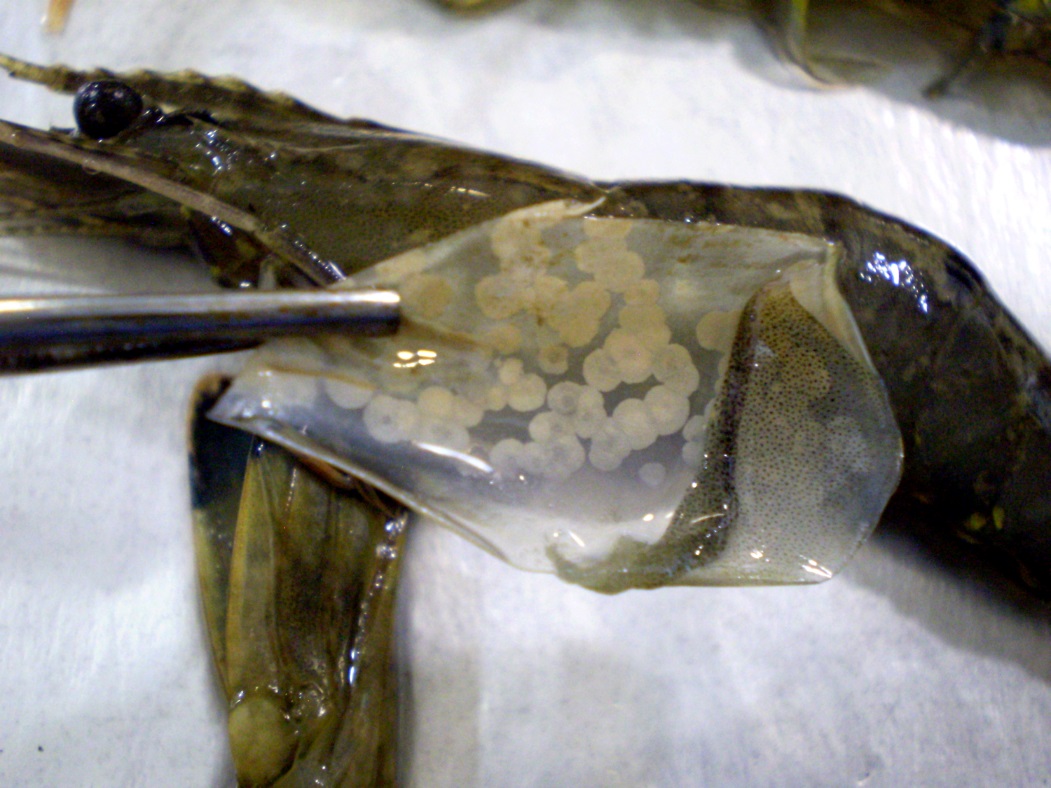
Inspection and testing of a prawn infected with white spot disease - photo courtesy of Queensland Department of Agriculture and Fisheries
Help stop its spread
You can take the following steps to stop white spot disease from spreading in the NT:
- don't use prawns meant for human consumption as bait
- don't throw away prawns meant for human consumption in or near waterways
- never throw any seafood waste in waterways.
Report it
If you think you've seen a case of white spot disease, follow these steps:
Step 1. Photograph it - from different angles and with the bag the prawns were purchased in.
Step 2. Record it - make a note of when and where you purchased the prawns including the producer’s name, the trade or common name of the prawns and where they came from.
Step 3. Collect it - keep the whole bag of prawns and freeze it.
Step 4. Report it - call the Fishwatch Hotline on 1800 891 136 or make a report through the Fishing Mate app.
To find out more about the response to this disease, go to the National Pest and Disease Outbreaks website.
History of disease in Australia
An outbreak of white spot disease was confirmed on several prawn farms in south-east Queensland in December 2016.
It triggered a national biosecurity response to contain and eradicate the disease.
In south-eastern Queensland, there is a management zone. There are restrictions on moving untreated prawns and polychaetes out of the area because the disease hasn't been completely eliminated.


